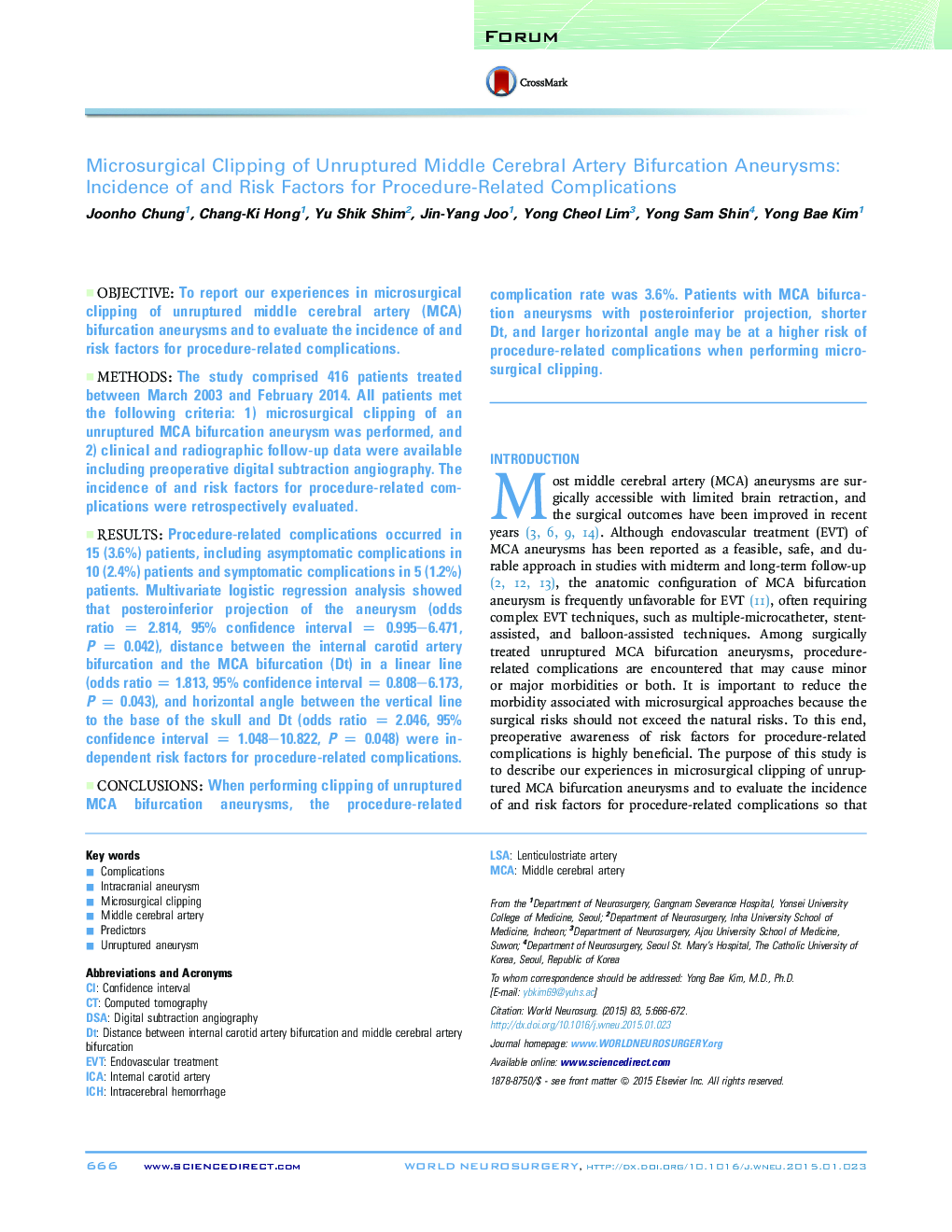| Article ID | Journal | Published Year | Pages | File Type |
|---|---|---|---|---|
| 3094998 | World Neurosurgery | 2015 | 7 Pages |
ObjectiveTo report our experiences in microsurgical clipping of unruptured middle cerebral artery (MCA) bifurcation aneurysms and to evaluate the incidence of and risk factors for procedure-related complications.MethodsThe study comprised 416 patients treated between March 2003 and February 2014. All patients met the following criteria: 1) microsurgical clipping of an unruptured MCA bifurcation aneurysm was performed, and 2) clinical and radiographic follow-up data were available including preoperative digital subtraction angiography. The incidence of and risk factors for procedure-related complications were retrospectively evaluated.ResultsProcedure-related complications occurred in 15 (3.6%) patients, including asymptomatic complications in 10 (2.4%) patients and symptomatic complications in 5 (1.2%) patients. Multivariate logistic regression analysis showed that posteroinferior projection of the aneurysm (odds ratio = 2.814, 95% confidence interval = 0.995–6.471, P = 0.042), distance between the internal carotid artery bifurcation and the MCA bifurcation (Dt) in a linear line (odds ratio = 1.813, 95% confidence interval = 0.808–6.173, P = 0.043), and horizontal angle between the vertical line to the base of the skull and Dt (odds ratio = 2.046, 95% confidence interval = 1.048–10.822, P = 0.048) were independent risk factors for procedure-related complications.ConclusionsWhen performing clipping of unruptured MCA bifurcation aneurysms, the procedure-related complication rate was 3.6%. Patients with MCA bifurcation aneurysms with posteroinferior projection, shorter Dt, and larger horizontal angle may be at a higher risk of procedure-related complications when performing microsurgical clipping.
